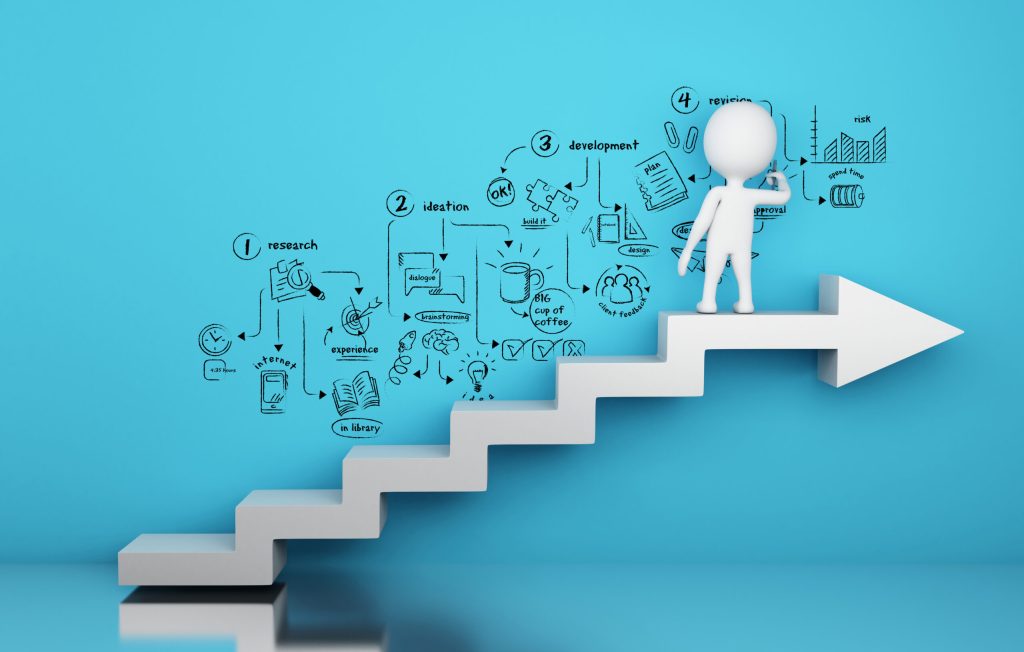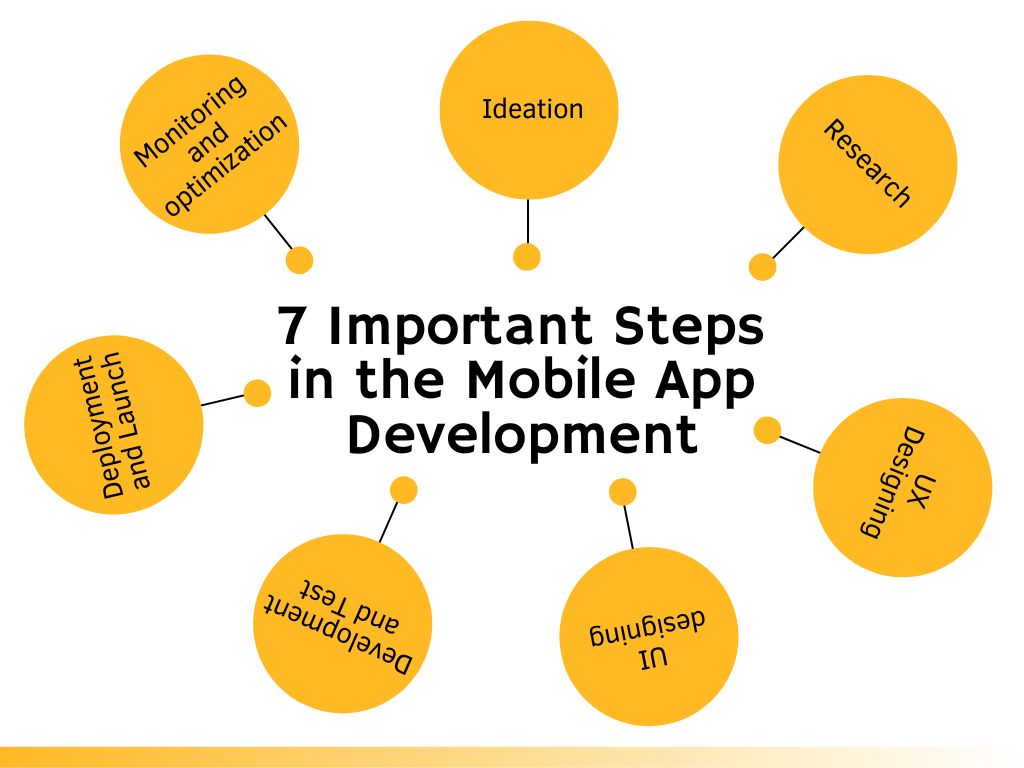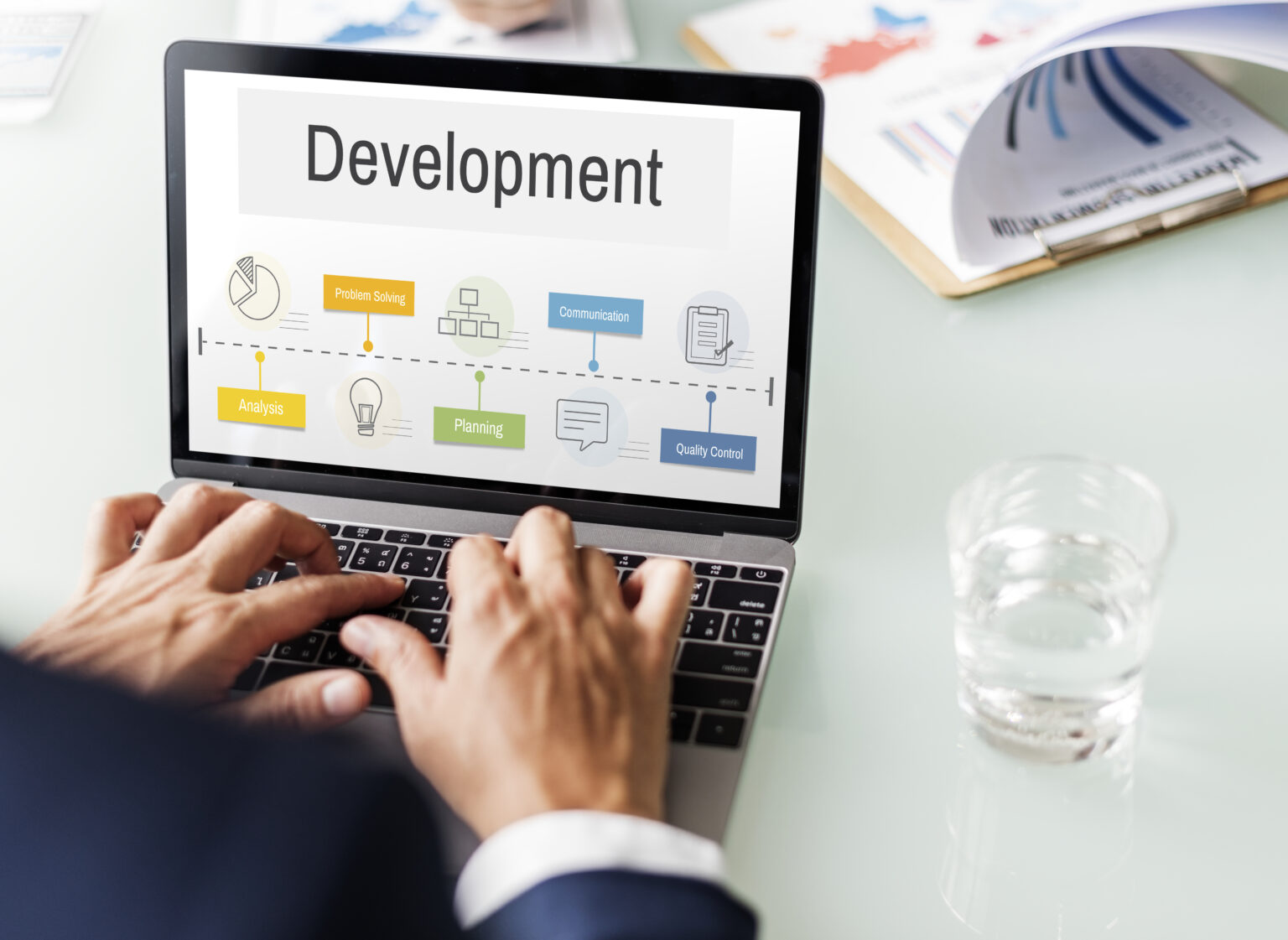The process of creating mobile applications is common and easy. It involves plans, design, development, and deployment, much like any other software development project. However, if you’ve never worked in the field of software development previously you could occasionally find it to be a little boring.
Why does the design require so many steps? Why is ongoing testing required? Then, what precisely are these iterations? Knowing the subtleties of the mobile app development process beforehand can help you ask less questions and have a more pleasant experience.
From conception through distribution, the full process of creating an app will be taken you through in this post.
What you will discover is:
- The critical phases of developing a mobile app, from the idea to post-launch monitoring.
- The degree to which various stakeholders get involved at each level.
- The outputs at various phases of the procedure
- The specifics of designing mobile apps, including why it requires a number of stages to create a user-centered app.
There are several steps involved in creating an app, including approach, design, development, and marketing. We divide the creation of an app into 7 steps and discuss in great detail on each one. You’ll comprehend the development of your product from a concept to a usable programmed that can be acquired from app stores better.
1. Ideation

Every mobile project begins in a different way. Many clients merely have a concept when they contact us. Others already have a list of features they’d want to see in an app or certain needs that have been written down. Sometimes a client needs to create an app that is identical to an existing system. For instance, when a business relies on a web platform and demands an app to give clients or employees a smooth cross-device experience. And it’s common to receive requests for an “app like Uber Eats” or similar requests.
In any event, our main objective from the beginning has been to understand as much as we can concerning the idea behind your product. Who will employ it? What platform(s) are we developing for? Exist comparable systems in this market? What are the project’s business objectives? Have you thought about a marketing plan?
We begin the process of developing an app with a series of customer conversations and workshops to gain a comprehensive understanding of the project goals, context, and timeframe. In a perfect world, we involve several parties on your side, including a product owner, creators, your marketing team, and subject matter experts, etc. This method enables us to discuss as many project-related details as we can, hear your desires, and delve into your company’s market and business environment.
Once we have all the necessary data and needs, we proceed to one of the most crucial stages of the application development process: analytics and research.
2. Research
In the creation of every new product, this is an essential step. Your product approach will be more honed the better your research is. During the remaining stages of development, it helps save a significant amount of time and lowers the cost of developing mobile applications.
As a general rule, we do our study in a number of directions using various business analysis techniques in software development:
Audience
We gather as much information as we can about the app’s potential users, including their needs, goals, expectations, difficulties, routines, technical aptitude, and preferred devices. The development of user personas later on during the design phase requires the usage of this data.
Competition
Knowing what other companies in your niche are offering never hurts. We review the competition to observe how other businesses address comparable problems, the technologies they employ, and the benefits they offer. We learn what they’re doing well and what may be improved. This analysis aids in market comprehension and identifies chances for its competitive edge.
Industry
Each site has its own guidelines, regulations, technology, methods of monetization, and basic operational procedures. When appropriate, we consider industry-specific details and incorporate expertise from other industries. The conclusions of this research will significantly influence the decisions made on design and technology.
The business and technology
We get to know your company’s activities for the next mobile app, as well as its technological foundation. As a result, we will be able to choose the best tech stack and create mobile experiences that are consistent with the other services you offer and represent the identity of your business.
We may prioritize requirements, choose tech scope, and establish a product creation roadmap depending on all the data we put from interviews and research.
3. UX Designing

Because it gives you the first taste of how your application might look and function, user experience design is undoubtedly the most exciting phase of the mobile application development lifecycle. At this point, we make decisions about how users will interact with the system and the application.
UX design is an extensive method in and of itself. We’ll offer you a brief overview, but if you’re interested in learning more, read our article on the methods and processes of design.
Personas
Do you recall the initial phases of app development when we looked at the target market? For the creation of personas, we now require these data. An individual is a collective representation of a user group with comparable aims, intentions, behavior, technological aptitude, etc. We can create experiences that cater to the demands of various target audiences by using personas.
User Scenarios
User scenarios explain the app’s user interface for each persona. Combining several scenarios creates scenario maps that show how each persona may and will utilize your programme.
Information architecture
Information architecture (IA) depicts the organization and initial design of the app’s user interface. It helps you get a sense of what will be displayed on various displays, how they are related, and how users will move about your application.
Sketches
Sketching on paper on a whiteboard is a very innovative and team-oriented method of developing mobile applications. This step’s objective is to investigate various design iterations for each display and interface. Along with project managers and designers, the team may also include developers, business analysts, and quality assurance specialists. It is typically a very hectic process with countless iterations and millions of recommendations. This describes how quick-and-easy tools like markers and stickers work.
Wireframes
The only elements of your application’s screens that are missing from the black-and-white wireframes are color, genuine images, and content. At this level, utilizing prototype tools like Marvel, we can already do some early testing and navigate the black-and-white screens.
4. UI Designing
Wireframes in black and white are transformed into appealing, colorful mockups during the UI design stage. This is undoubtedly one of the more rewarding phases of creating an app. You can now preview exactly how your application will appear when a user launches it on a mobile device.
If your product reflects a completely new brand that was developed from scratch, this approach may begin with vision boards, a set of design components, and color scheme examples. However, if you already have an advertising book, style guide, or other branding resources, a UI designer’s major objective will be to accurately adapt your business’s distinct personality to the new application.
You will have a vibrant, high-fidelity model of your app in Figma, a or another design tool by the end of this round.
The final stage of the design process is UI design. But don’t be shocked if we need to return to the designs and make some adjustments later on, perhaps during the development and testing phases of creating an app. The wonderful aspect of the iterative development method is that it enables us to test our assumptions and design ideas before the system even gets into the hands of its final users, enabling us to make improvements based on early feedback.
5. Development and Test

The next stage in the creation of the app begins when the completed and approved UI design is given to the development team. Before any coding starts, this transition must go smoothly, and developers and designers must be able to interact and iron out the nuances. After all, the development team aims to produce an application that is not only useful but also captivating and pixel-perfect..
The group’s skill set and composition will depend on the application’s specifics. One iOS and one Android mobile app layout are used for generating two native applications, but two engineers (one for each platform) are employed to develop an app for each store. Universal mobile apps, which usually consist of one source code base and can be produced by a single engineer, can be made using current techniques like React Native and Flutter. However, we might need to add more expertise and talents to the project if the app requires significant backend development. Of course, a QA engineer is necessary in order to design a reliable application.
The development step of a mobile app takes the longest. Thankfully, it’s also the process’ most enjoyable step mostly because you will be able to try out your application at last. Additionally, you may keep a close eye on its development and occasionally test out new iterations.
Agile methodology
The industry-standard and tried-and-true method of agile development is used in software development. The entire development process is divided into a number of phases that each comprise development, testing, and review before we even begin to code. We create a batch of attributes, test their implementation, address any problems, and conduct a review for each cycle. If something doesn’t add up or the needs change, we may quickly reorient the development strategy without experiencing significant delays or expensive revisions.
This strategy offers tremendous transparency for you and the development team in addition to flexibility. You can always weigh in with feedback and suggestions as you watch the application develop iteratively.
Front-end Development
Developing a client application which will be installed on consumers’ smartphones is what we mean when we discuss frontend in the context of the app development process. In other words, we implement the UI design and make it functional.
Keep in mind that the code will be executed on a mobile device having limited memory and battery life. As a result, we must make numerous choices that will affect how well the app works. For instance, we must determine how much computing should be done directly on the device to provide a nearly instantaneous user response (such as picture editing features) or smooth offline performance (such as industrial applications). In order to lighten the programmed and improve scalability, we make decisions about logic and data handling that will operate on the server at the same time.
Backend development
All server-side engineering is done in the backend development. Typically, the earliest steps of developing a mobile application lay the foundation for the backend structure in the tech scope.
We may need to develop or incorporate tools to manage the app’s material store and retrieve user data as needed (database), and work with third-party platforms and other software you might already be using (widgets, APIs), depending on the technical specifications and functional requirements. The infrastructure of the app must frequently be hosted and maintained by third-party cloud providers.
Strong security of data, including user data protection (especially crucial for medical mobile app features), safe authentication techniques, encryption technologies, etc., is a key component of backend development. Poor data security procedures could end up costing a corporation millions of dollars in 2022.
Testing
Each stage of the development cycle includes quality assurance. Various testing methodologies are used in this step. Functional and speed tests help to guarantee that everything functions as it should, that the app is quick, and that it can handle the traffic. User experience is a main emphasis of usability tests. To verify how everything renders on different screen sizes, we also test the programme on a variety of devices and device simulators.
6. Deployment and Launch
We ensure that your application is reliable and effective before moving on to the deployment and launch phases of mobile app development. Whenever feasible, we test and assess our work both with the stakeholders and with prospective users who can provide us with early feedback.
We are able to add an app to the site or stores as soon as everything is clear. As the app’s owner, you must create a developer account if you don’t already have one. We adhere to a number of established practices, including posting screenshots and writing explanations. The process shouldn’t take more than a few days if everything goes according to plan and the retailer reviews the form right away. Store representatives may be contacted for feedback or requests. The launch could then be delayed until everything is resolved.
You might require a web landing for an application aimed at customers that advertises the app and offers connections to the stores wherever the software is available.
An app enters shops after passing all crucial stages of development for mobile devices, and you receive the initial evaluations and installation data. Your trip may appear to be done, yet in most situations, it has just begun.
7. Monitoring and optimization
It’s crucial to keep track of your app’s performance after launch, read user evaluations, and occasionally even get in touch with users directly to find out if there are any usability problems. Nothing beats hearing from actual users.
You can create certain KPIs and use analytics applications for monitoring depending on your aims. You will eventually amass a sizable amount of input that can assist you formulate a plan for additional product optimisation.
How much time is spent on app development?
A lightweight software with basic functionality might be designed and developed in as little as two to three months. For the PoC and ready for market MVP projects, this is frequently the case. On the other hand, developing and releasing feature-rich apps integrated with numerous other apps may take six months to a year.
The quantity and duration of steps involved in developing an app are influenced by a number of key variables:
Tech stack and methodology:
When creating an Android or iOS mobile application, native toolkits typically need more time than cross-platform coding kits (React Native, Flutter). Cross-platform, however, is sometimes the ideal option, particularly for applications with high loads.
Functionality:
The project roadmap will likely be most significantly impacted by the quantity and complexity of features.
Integrations:
Integration with other systems or third-party services may shorten the development lifecycle or lengthen it depending on the objectives of the project. For instance, we frequently use API-driven interfaces to use resources currently in use or to avoid developing unique functionality. Configuring, testing, and supporting a growing amount of integrations takes more work.
Resources:
https://www.digiteum.com/mobile-app-development-process/
https://shiverware.com/app-development/7-steps-app-development.html







